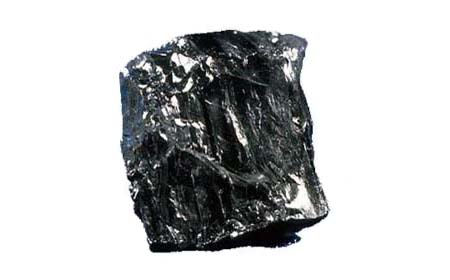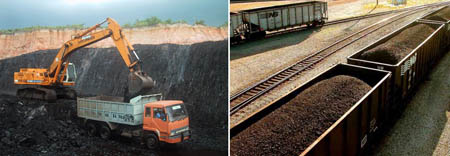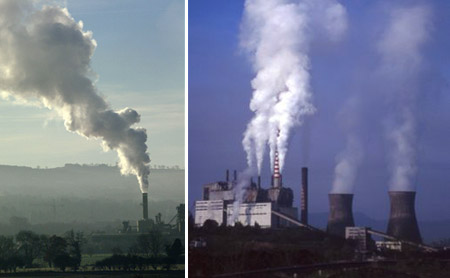 He refers to burning oil and coal as a way of "tapping the Carboniferous Formation and spewing it up into the sky" – that is, it's "carbon we have mined from the Earth and loaded into the air."
He refers to burning oil and coal as a way of "tapping the Carboniferous Formation and spewing it up into the sky" – that is, it's "carbon we have mined from the Earth and loaded into the air." Or: geology gone airborne.
 [Image: A glimpse of the Carboniferous Formation, or coal awaiting its own secular ascension; via].
[Image: A glimpse of the Carboniferous Formation, or coal awaiting its own secular ascension; via].Because of this unintentionally aero-geological project, Weisman writes, "[a]mong the human-crafted artifacts that will last the longest after we're gone is our redesigned atmosphere." After all, that atmosphere now has a very large chunk of the Earth's surface floating around inside it, storing sunlight and heat.
 [Image: Coal – before being "loaded into the air" through burning].
[Image: Coal – before being "loaded into the air" through burning].The word Carboniferous, meanwhile, refers to huge, continent-spanning deposits of coal that first began forming roughly 300 million years ago, in the appropriately named Carboniferous Period. Coal is formed from the compression, burial, and slow cooking of biological matter: old tropical forests and other organisms thus transform into an energy-intense geological formation.
In addition to the burning of oil – itself an ancient, carbon-based biological deposit – it is the combustion of all this coal that has fueled our ongoing industrial revolution.
In the process, Weisman implies, humans have achieved something extraordinary: the installation of a geological formation in the sky.
 Looked at this way, it should come as no surprise that the Earth's climate is now changing.
Looked at this way, it should come as no surprise that the Earth's climate is now changing. Its air is full of geology.
(Also in reference to The World Without Us – a very uneven but still fascinating book – see BLDGBLOG's earlier post about the accidental discovery of underground cities in Cappadocia).
No comments:
Post a Comment